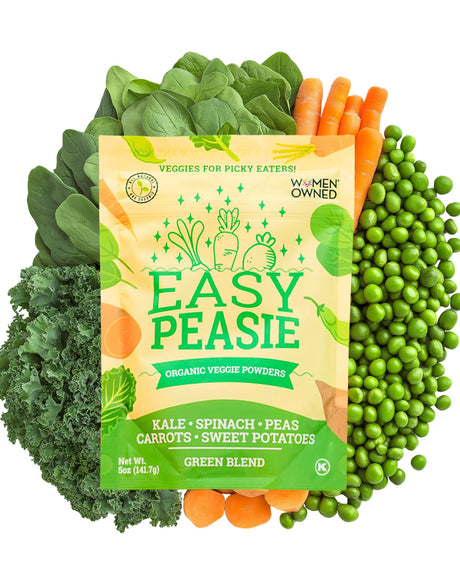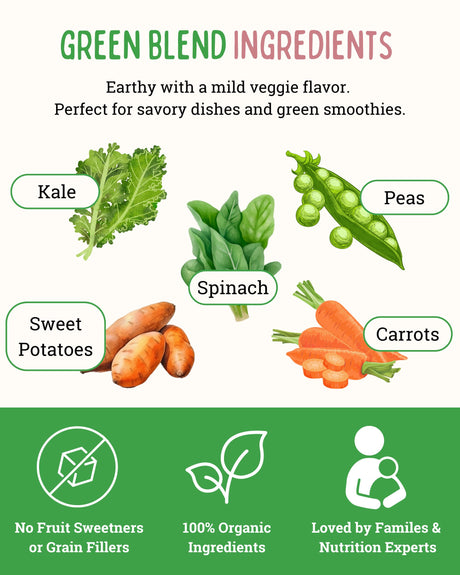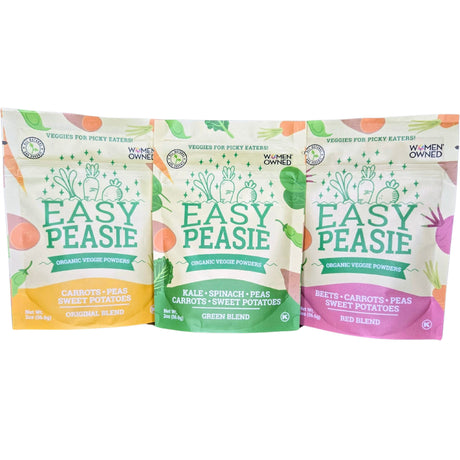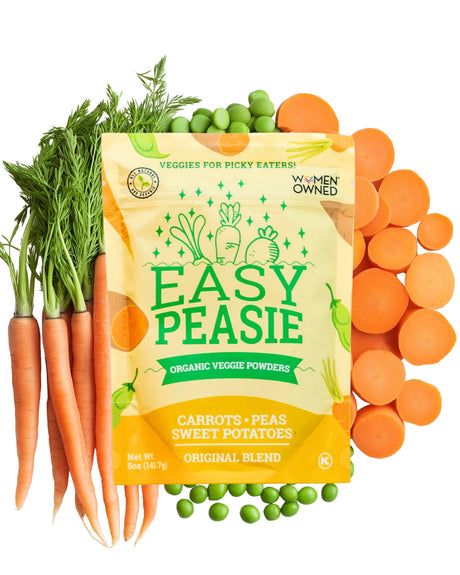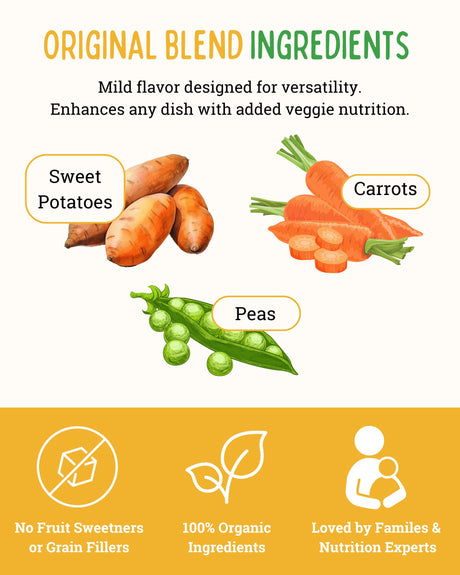You're sitting at your kitchen counter at 5 PM, mentally cycling through dinner options while juggling three different sets of dietary needs. Your 6-year-old will only eat pasta with butter. Your diabetic mother-in-law needs low-sodium, controlled carbohydrates. Your father can't chew tough foods since his dental work. And somewhere in all of this, you're supposed to feed yourself and your partner too.
Welcome to the sandwich generation – where you're caring for both children and aging parents while trying to maintain your own sanity. If meal planning feels like an impossible puzzle with pieces that never quite fit together, you're definitely not alone in this challenge.
Nearly half of adults in their 40s and 50s find themselves caring for multiple generations, and mealtimes can become the most stressful part of the day. But here's the encouraging truth: with the right strategies and a shift in perspective, you can create meals that work for everyone without losing your mind in the process.
Understanding the Multi-Generational Challenge
The Perfect Storm of Dietary Needs
When you're feeding multiple generations, you're not just managing different taste preferences – you're navigating completely different nutritional requirements, physical abilities, and eating challenges.
Your Children Might Need:
- Familiar, consistent foods during picky eating phases
- Proper nutrition for growth and development
- Foods they can eat independently at their developmental stage
- Patience with slow eating or sensory sensitivities
Your Aging Parents Might Require:
- Modified textures for easier chewing or swallowing
- Specific dietary restrictions for health conditions
- Consistent meal timing for medication schedules
- Foods that accommodate vision or dexterity challenges
You and Your Partner Need:
- Quick, efficient meal solutions that don't require hours of prep
- Nutrition that supports your busy, stressful lifestyle
- Something that feels satisfying after a long day
The Emotional Weight of Feeding Everyone
Beyond the logistics, there's an emotional complexity to sandwich generation meal planning that often goes unspoken. You might feel guilty when your child's needs conflict with your parent's restrictions. You may worry about whether anyone is getting proper nutrition. Some days, you might feel like you're failing everyone at once.
This emotional load is real and valid. Caring for multiple generations while working and managing your own life is genuinely challenging, and it's completely normal to feel overwhelmed by the responsibility.
Smart Strategies for Multi-Generational Meals
The Foundation: One Base, Multiple Modifications
Instead of cooking entirely separate meals, start with flexible base ingredients that can be modified for different needs without extensive extra work.
Example Base: Simple Chicken and Rice
- For elderly family members: Shred the chicken and make rice softer with extra broth
- For picky children: Serve components separately with familiar seasonings
- For adults: Add vegetables and seasonings to taste
Other Versatile Bases:
- Pasta (can be served with different sauces and add-ins)
- Slow cooker soups (easily modified for texture and seasoning)
- Ground meat dishes (can be seasoned differently for each group)
- Mashed or roasted vegetables (texture and seasonings can vary)
The Make-Ahead Strategy
When you're managing multiple generations, advance preparation becomes crucial for maintaining sanity.
Sunday Prep for Success:
- Cook large batches of base proteins that can be used throughout the week
- Prepare soft vegetables for elderly family members (steam and freeze portions)
- Pre-cut fruits and vegetables for children who eat finger foods
- Make large pots of soup that can serve as backup meals
Nutrition Boost Strategy: Easy Peasie Veggie Blends can be a game-changer for sandwich generation families. When you're juggling everyone's needs, having a simple way to add real vegetable nutrition to any meal removes one layer of stress. The mild flavors work well for picky children, elderly family members with changing taste preferences, and adults who might skip vegetables.
Practical Applications for the Whole Family:
- Mix into mashed potatoes or rice for elderly family members who need softer textures
- Stir into pasta sauce, soups, or smoothies for children who refuse visible vegetables
- Add to ground meat dishes, casseroles, or bread recipes for nutrition-conscious adults
- Blend into applesauce, yogurt, or puddings that work across all age groups
Texture Modification Made Simple
One of the biggest challenges in multi-generational cooking is creating foods that work for both developing children and aging adults who may have chewing or swallowing difficulties.
Easy Texture Solutions:
- Invest in a good blender or food processor for quick modifications
- Cook vegetables longer to achieve softer textures naturally
- Keep gravies and sauces on hand to moisten dry foods
- Learn to modify family favorites rather than creating entirely new recipes
Foods That Work for Multiple Texture Needs:
- Eggs (scrambled soft, hard-boiled for finger food)
- Well-cooked pasta with various sauce consistencies
- Smoothies and shakes (nutrition for everyone)
- Meatballs (soft for elderly, fun for kids, satisfying for adults)
Addressing Common Sandwich Generation Scenarios
Scenario 1: The Diabetic Grandparent and the Carb-Loving Child
This is one of the most common challenges – managing blood sugar concerns while feeding children who live on pasta and bread.
Solutions That Work:
- Serve smaller portions of the child's preferred carbs alongside protein and vegetables
- Use whole grain versions when possible, but don't stress if they're rejected
- Include plenty of non-starchy vegetables that work for both
- Keep diabetes-friendly snacks available for grandparents
Example Meal: Spaghetti dinner where the child gets regular pasta, grandparent gets a smaller portion with extra meat sauce and a side salad, adults can choose their portions based on their needs.

Hidden Nutrition Solution: Easy Peasie Green Blend works perfectly in pasta sauce for this scenario. The mild flavor disappears into tomato sauce, giving everyone real vegetable nutrition without anyone noticing.
Scenario 2: The Soft-Food Elder and the Texture-Sensitive Child
When your aging parent needs soft foods but your child has sensory issues with "mushy" textures.
Bridge Solutions:
- Serve the same foods in different preparations (mashed vs. roasted vegetables)
- Use natural soft foods like ripe fruits, well-cooked grains, and tender proteins
- Keep some components separate so children can avoid textures they dislike
Example Meal: Soup night where adults get hearty vegetable soup, elderly family member gets the same soup blended smooth, and children get the broth with familiar crackers or bread.
Scenario 3: The Medication Schedule vs. the Preschooler's Routine
Elderly family members often need to eat at specific times for medication, while young children need consistent meal routines that might not align.
Timing Strategies:
- Create a family meal schedule that accommodates the most restrictive needs
- Keep healthy snacks available for those who need to eat outside main meal times
- Use slower-eating family members' extra time to help faster eaters with conversation
Practical Menu Planning for Complex Needs
Weekly Menu Framework
Instead of planning individual meals, think in terms of weekly patterns that provide variety while maintaining structure.
Monday/Wednesday/Friday Pattern: Comfort Foods
- Pasta with various sauce options
- Soup and sandwich combinations
- Rice or potato-based dishes
Tuesday/Thursday Pattern: Simple Proteins
- Chicken prepared multiple ways
- Eggs in various forms
- Ground meat dishes
Weekend Pattern: Family Style
- Slow cooker meals
- Build-your-own options (tacos, salads, etc.)
- Leftovers repurposed creatively
Shopping Lists That Work
Create shopping lists organized by how foods will be used rather than by store sections.
Base Ingredients (used multiple ways throughout the week):
- Chicken thighs (tender when cooked well)
- Ground turkey or beef
- Eggs, rice, pasta, potatoes
Emergency Backup Foods:
- Frozen meals that meet various dietary restrictions
- Shelf-stable soups
- Easy-to-prepare snacks for each generation
- Easy Peasie Veggie Blends to add nutrition to any backup meal
Managing the Emotional Challenges
Letting Go of Perfect Nutrition
When you're caring for multiple generations, some days everyone getting fed is a victory. Perfect balanced nutrition at every meal isn't realistic, and that's okay.
Realistic Expectations:
- Aim for balanced nutrition over a week, not every meal
- Accept that some family members will eat better than others on any given day
- Focus on ensuring everyone gets enough calories and stays hydrated
- Celebrate small victories in food acceptance or family meal participation
Managing Your Own Needs
In the midst of caring for everyone else, it's easy to forget that you need proper nutrition and stress management too.
Self-Care While Caregiving:
- Eat something nutritious even if it's not a formal meal
- Accept help when it's offered, especially around meal preparation
- Keep healthy snacks for yourself readily available
- Remember that your health matters for your family's wellbeing
Time-Saving Tools and Techniques
Kitchen Equipment That Helps
Most Helpful Appliances:
- Slow cooker or pressure cooker for hands-off meal preparation
- High-quality blender for texture modifications
- Rice cooker for consistent, easy side dishes
- Mini food processor for quick chopping and pureeing

Batch Cooking Strategies
When you're feeding multiple generations, batch cooking becomes even more valuable because you can create multiple meal solutions from one cooking session.
Effective Batch Cooking:
- Cook large amounts of base proteins that can be seasoned differently
- Prepare big batches of soups that can be modified for texture
- Make large quantities of grains and store them for quick meal assembly
- Freeze portion-sized servings for backup meals
Building Support Systems
Family Involvement
When possible, involve other family members in meal planning and preparation to reduce the burden on one person.
Age-Appropriate Help:
- Children can help with simple tasks like washing vegetables or setting the table
- Teenagers can assist with meal prep or cooking simple dishes
- Adult family members can take responsibility for their own special dietary needs when possible
Professional Support
Don't hesitate to seek professional help when managing multiple generations becomes overwhelming.
Helpful Professionals:
- Registered dietitians who specialize in geriatric or pediatric nutrition
- Occupational therapists who can suggest adaptive eating tools
- Home health aides who can assist with meal preparation
Your Action Plan: Starting This Week
Week One: Assessment
Take time to honestly evaluate your current situation without judgment.
Questions to Consider:
- Which meals are currently causing the most stress?
- What are the non-negotiable dietary needs for each family member?
- Where are you spending the most time and energy around food?
- What's working well that you can build on?
Week Two: Simple Implementation
Choose one strategy from this guide to implement without changing everything at once.
Easy Starting Points:
- Begin batch cooking one base protein each week
- Introduce one flexible meal that can be modified for everyone
- Establish a simple meal planning routine
- Stock your kitchen with tools or ingredients that will make modifications easier
Moving Forward with Confidence
Remember Your Why
In the midst of daily meal planning challenges, it's easy to lose sight of the bigger picture. You're not just feeding people – you're caring for multiple generations of your family while modeling love, responsibility, and resilience.
The meals don't have to be perfect. The nutrition doesn't have to be ideal every day. What matters is that you're showing up for your family with love and doing your best in a genuinely challenging situation.
Trust Your Instincts
You know your family better than any expert or guidebook. Trust your instincts about what will work in your household, what your family members need, and what you can realistically maintain.
Celebrate Small Victories
In sandwich generation caregiving, progress often comes in small increments. Celebrate these victories:
- A meal that everyone ate without complaints
- A successful modification that worked for multiple family members
- A day when meal planning felt manageable rather than overwhelming
- Moments of genuine connection around the dinner table
Your Next Steps: From Overwhelmed to Organized
Remember that creating sustainable meal solutions for multiple generations is a process, not a destination. Some weeks will go smoothly, others will feel chaotic, and that's completely normal.
What you're doing – caring for both children and aging parents while maintaining your own life – is genuinely difficult work that deserves recognition and support. You're not expected to be perfect at it, and you don't have to figure it all out immediately.
The fact that you're reading this and seeking solutions shows that you're a thoughtful, caring family member who wants to do right by everyone you love. That intention matters more than any specific meal or nutrition strategy.
Take it one meal at a time, one day at a time. Your family is fortunate to have someone who cares enough to keep working toward solutions that honor everyone's needs while preserving your own wellbeing.
You're not just surviving the sandwich generation experience – you're creating a model of multigenerational care that shows love through the practical act of nourishing the people who matter most to you. Easy Peasie Veggie Blends are here to support your family's nutrition needs across all generations, making it possible to add real vegetable nutrition to any meal without the stress of getting everyone to eat their vegetables.
Disclaimer: This article is for educational purposes only and does not constitute medical advice. Always consult with healthcare providers for concerns about nutrition, eating patterns, or health conditions for both children and elderly family members.


